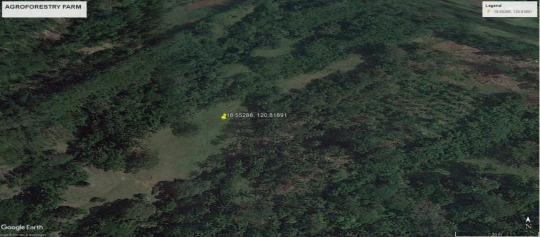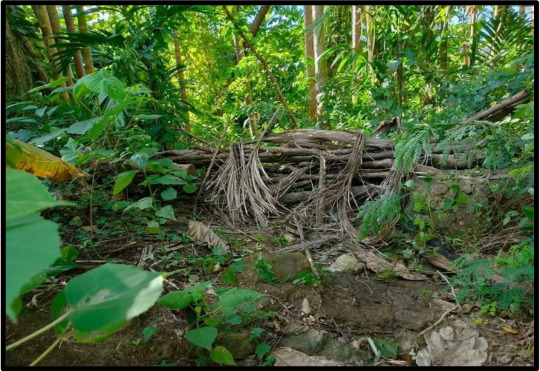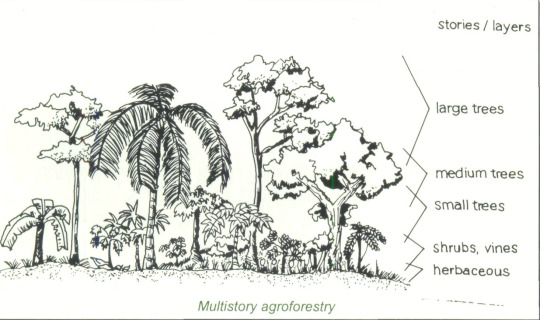#MultiStoreyAgroforestrySystem
Explore tagged Tumblr posts
Text
Soil and Water Conservation Methods in Agroforestry
As a consequence of increasing population and changing climate, the planet's limited natural resources are under tremendous strain. Soil erosion is one of the current consequences.
Soil and Water Conservation (SWC) measures are utilized to address the problem on the scarcity of water and soil erosion in agroforestry systems.
Several types of efforts to minimize soil erosion through adopted SWC methods have been conducted. This is for the purpose of preserving and conserving our natural resources to guarantee that future generations will still be able to access and utilize them.
Again, for a profound example on SWC, below are information from the BS Forestry students' study on the same Agro-farm.

The students visited the Multi-story Agroforestry Farm in Pagudpud, Ilocos Norte again. This time, to observe and determine the Soil and Water Conservation measures applied by the owners in the area.
Upon observation, they found that the owners are implementing these SWC measures unknowingly:

1. Check Dams
The students observed pieces of sticks that forms a fence, the purpose is to slow down the water flow during heavy rainfall, further preventing surface soil to be washed away along with the water.
While is is useful during months that are rainy, this has the disadvantage of not being sustainable year round because the agroforestry farm doesn’t have water source aside from rainfall. The owners rely on natural phenomenon for water and this check dam does not address the problem of water scarcity.

2. Vegetation Establishment
Vegetation Establishment acts as water sponge as the roots of the vegetation keeps holds the soil and acts as storage of water. There are several layers of the canopy that can be observed in the site which composed of the Ipil-ipil, Yemane, and agricultural crops and other grasses. The presence of abundant tree species helps in holding water thus minimizing the occurrence of soil erosion.
This measure is the most natural way since it mimics the appearance of a forest ecosystem that has less occurrence of soil erosion and has water banks in terms of root system of the vegetation. It is also cost-effective because some of the species that are suggestion to be utilized are the fast-growing species such as ipil-ipil and kakawate. It also includes little or no maintenance and you can also utilize the vegetation for other purposes since they can also be harvested when suggestion or needed. For these reasons, the students noted that this is the best SWC measure than is applied on this certain farm.
The disadvantage in this measure is that it is not being implemented properly by the owners because they are unknowingly implementing it. It is important that the owners understand the principles of agroforestry for them to utilize the knowledge to have a better management in the area.
After the study, the students note that it is important that we continue to give and take knowledge and practices for our mutualistic benefits especially so that agroforestry farm owners and managers establish these for livelihood. Thus, we should also consider the impact of this to global climate change and soil and water conservation and technology as we continue to promote the development of soil and water conservation in every agroforestry farm.
For more information, documentation and photos on this study, watch the video below:
A photo of the students involved in this study:

0 notes
Text
Multi-storey Agroforestry System Components
Agroforestry components refer to the species of plants that are utilized in a system.
For a clearer reference on multi-storey agroforestry system components, below is information about it from a study conducted by BS Forestry students:
The locale of the study is a Multi-storey System located in Brgy. Aggasi, Pagudpud, Ilocos Norte

The agro farm is owned by Mr. Rogelio Agredas and was established in 1985. The land area is approximately 7.2 hectares, managed and used for the reason of sustainable livelihood.
To gather the needed data, the students visited the farm to observe a part of the farm (approximately 2 ha), and interviewed the owner.
The components of the Agroforestry System:

Different systems utilize different silvicultural practices to thrive. For this particular system here are the silvicultural treatments that are implemented and their purpose:

Studying the components of an Agroforestry System enables us know its strengths and its weaknesses. This enables us to improve upon it.
In this study, after analysis of the data, the students formulated a strategic plan for the site:

They recommend that the agroforestry farm could adopt rainwater harvesting. Since the area has gained attention in recent years, especially after couple seasons of rainy days followed by several dry weeks during the growing season. Rainwater harvesting systems conserve water and help the agroforestry farm from water insufficiency.
For more photos on the site, and documentation, here is a video of the said study:
0 notes
Text
What is Agroforestry?
Agroforestry is a collective name for a land-use system and technology whereby woody perennials are deliberately used on the same land management unit as agricultural crops and/or animals in some form of spatial arrangement or temporal sequence. In an agroforestry system there are both ecological and economical interactions between the various components.
Agroforestry Systems
There are different agroforestry systems that are being practiced in the Philippines. This blog's focus, however, is on the Multi-storey System.
A multistory agroforestry system has at least three "stories" or "layers" of intercropped plants of different heights.

The multi-storey agroforesty system has a unique Characteristic, which is the soil, even though there is no stable water resources, the area is still productive because of the good nutrient cycling in the area . Since, it is surrounded by forest trees, the forest litter will become additional nutrient component of the soil.
Moreover, the microclimate in this agroforestry system is very good, thus crops can adapt in the area. This system also helps to reduce the impacts of hazards such as floods and droughts that lead to land degradation because leaf litter is more prevalent in this system. The growing trees and/or shrubs such as forest species, commercial tree crops mixed with annual and perennial plantation crops mainly to support the agroforestry farm production and supplement the income. This, as a bonus, also provides for ecosystem services such as protection of soil, biodiversity enhancement, restore degraded lands and carbon sequestration.
0 notes